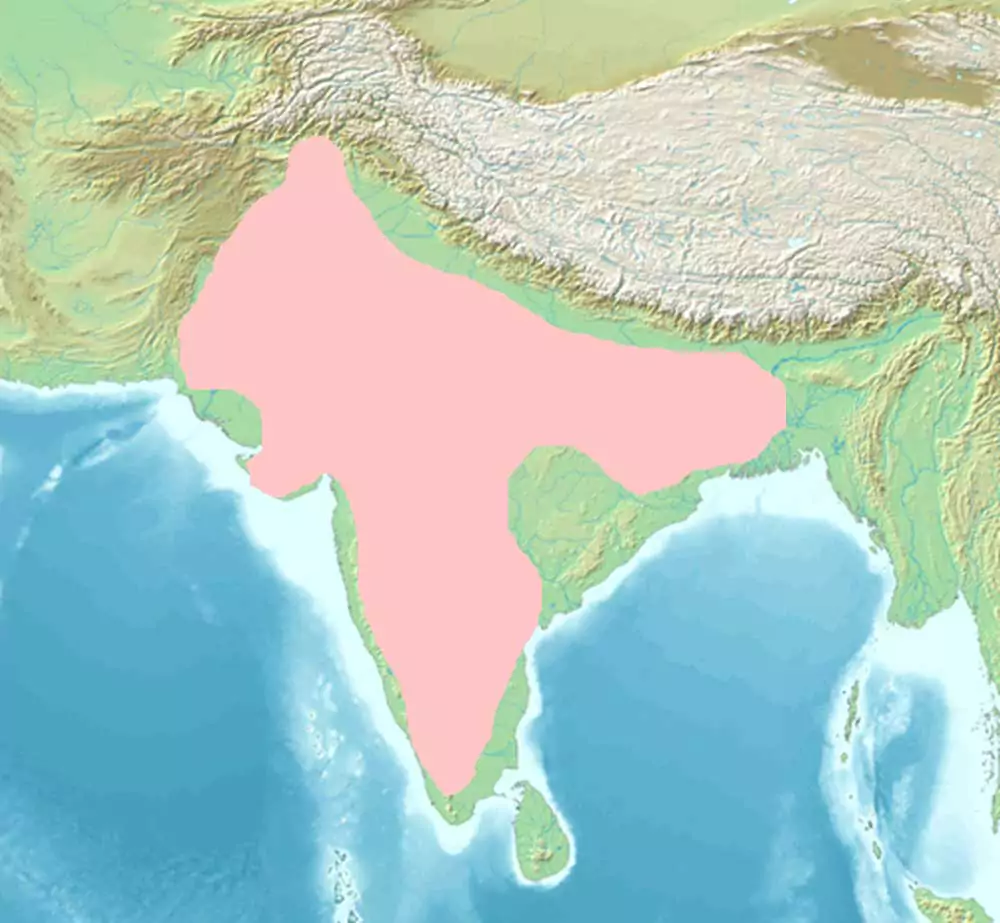The Tughlaq dynasty was the third dynasty of Delhi Sultanate. This dynasty lasted from 1320 to 1413 AD. This dynasty came to power when Ghazi Malik took the title Ghiyas-ud-Din Tughluq and became the ruler of Delhi in 1320. It had control of most of the Indian subcontinent. Tughluqs were of Turkic origin. The Tughlaq dynasty is known for its ambitious but controversial (often failed) policies.
This article provided Key points and GK on The Tughluq Dynasty. The points are important for NCERT notes UPSC prelims and other competitive government job examinations. The rulers and their achievements from this dynasty are discussed below.

Ghiyasuddin Tughluq [1320-1325 AD]
- Ghazi Malik, the actual name of Ghiyasuddin Tughluq, founded the Tughluq dynasty.
- He came from the Karana Turkic community.
- Ghazi Malik was the governor of Punjab during Alauddin Khalji’s reign.
- later he ascended the throne with the title of Ghazi.
Policies of Ghiyasuddin Tughluq
- He dug several canals to improve agriculture and irrigation in his kingdom.
- Additionally, he banned the sale and production of alcohol.
- He started to build a new city named ‘Tughlakabad’.
- His son Juna Khan conquered Warangal in 1323 AD.
- He took control of the Jaznagar region in Orissa and Warangal.
- Tughluq implemented strict rules toward Mongols.
- He executed messengers from Ilkhan Oljeitu and treated Mongol captives with severity.
- He reinstated Ala-ud-din’s food laws.
- He built a more efficient postal system and promoted agriculture throughout his time.
Muhammad bin Tughluq [1325-1351 AD]
- His real name was Juna Khan.
- Muhammad bin Tughlaq ruled Delhi from 1325 to 1351 AD.
- He dreamed of ruling the whole Indian subcontinent.
- He was influenced by mathematics, astronomy, and medicine
Policies of Muhammad bin Tughluq
- Tughlaq tried reforms like token currency and moving Delhi’s capital to Daulatabad. But his ambitious plans mostly failed.
- He wanted political and administrative unity across India.
- To get more treasury, he raised taxes heavily in the Doab region.
- Many fled to forests to avoid high taxes.
- Farms were neglected, causing severe food shortages.
- From Delhi, Mohammed-bin-Tughluq relocated his capital to Devagiri to protecthis kingdom and power.
- Yet after much hardship, he returned to Delhi.
- He implemented a copper coin as a currency system during his reign.
- However, as coin values plummeted, this copper token currency had to be withdrawn.
- He increased army soldiers to 3 lakh 70 thousand to conquer Khurasan, Iraq, and Transoxiana.
Firoz Shah Tughluq (1351-1388 AD)
- Firoz Shah Tughlaq was a son of Rajab Tughlaq, the brother of Ghiyasuddin.
- His mother was Niladevi, daughter of Ranamal.
- Firoz succeeded his cousin Muhammad-bin-Tughlaq on the throne in 1351.
- His reign lasted from 1351 to 1388 A.D.
- Firoz Shah Tughlaq wrote his autobiography called Futuhat e Firoz Shahi.
- Firoz Shah was eminent and generous in his wealth contributions to the people.
- Zia-ud-din Barani was a patronized scholar in his royal court.
- A book about physics Kutab-Feroz Shahi was composed during his reign.
Policies of Firoz Shah Tughluq
- Instead of cash, Firoz paid his army with land grants. He gave them land as payment.
- The British called Firoz the “Father of the Irrigation of Delhi Sultanate.”
- Because he built many canals connecting to different rivers (Yamuna to Hissar, Sutlej to Ghaggar, Ghaggar to Firozabad, etc.)
- He introduced 4 types of taxes – Kharaj, Khams, Jizya and Zakat.
- He introduced Dar-ul-shafa (a kind of hospital) and Diwani-i-kherat (Marriage Bureau offices).
- He was kind to the poor. He provides financial aid by introducing Diwan-i-lstibqaq to the poor.
Other Rulers from 1388 to 1394 AD
Tughluq Shah or Ghiyasuddin Tughluq II (1388-1389 AD): He was killed in a conspiracy by the Amir-Omrahs of his kingdom.
Abu Bakr (1389-1390 AD): He also lost his throne due to the intrigues of the nobles.
Nasiruddin Muhammad Shah (1390-1394 AD): His reign did not last long.
Alauddin Sikandar Shah (1394 AD): This Sultan ruled for only four months.
Nasiruddin Mamud Shah [1394-1413 AD]
- He was the last sultan of the Tughluq dynasty.
- Nasir-ud-Din Muhammad ruled from 1390 to 1394.
- When Abu Bakr Shah became Sultan, his uncle Muhammad Shah opposed him. They fought for the throne.
- Muhammad Shah ruled from 1390 to 1394 after defeating Abu Bakr.
Downfall of Tughluq Dynasty
- At this time the provincial rulers declared their respective states independent.
- Then Amirs declared Nasrat Shah as Sultan. Nasiruddin continued to rule in Delhi and Nasrat in Firozabad.
- In 1398, Timur Long invaded India. Mahmud Shah was defeated in this battle and they carried out extensive torture and plunder in Delhi.
- Before leaving India in 1399, Timur Long appointed Khizir Khan as the governor of Ahaltan, Lahore and Dipalpur.
- In such circumstances, the expansion of the Sultan’s empire declined when he fled to Gujarat. He died in Kaithal in 1413 AD.
- The Amir-Omrahs of Delhi defeated Daulat Khan Lodi and Khizir Khan established the Syed dynasty on the throne.
Conclusion
| King | Reign | Key Points |
|---|---|---|
| Ghiyasuddin Tughlaq I | 1320-1325 | Founder of the Tughlaq Dynasty. Moved capital from Delhi to Daulatabad. Known for efficient central administration. |
| Muhammad bin Tughluq | 1325-1351 | Introduced token currency Made large economic reforms. Known for shifting the capital back to Delhi Faced financial issues. |
| Firoz Shah Tughlaq | 1351-1388 | Patron of literature Infrastructure, irrigation projects developed |
| Ghiyasuddin Tughlaq II | 1388-1389 | Weak ruler Assassinated by his nephew |
| Abu Bakr Shah and Others | 1389-1394 | Faced rebellions throughout their reign |
| Muhammad Shah Tughlaq | 1394-1412 | Last effective ruler of the Dynasty Empire began to collapse after his death |